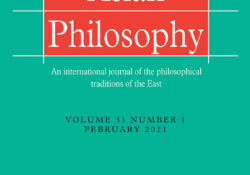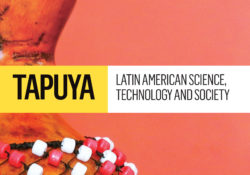tandfonline.com har udgivet en rapport under søgningen “Teacher Education Mathematics”: ABSTRACT ABSTRACT This paper discusses the Buddhist threefold model of wisdom which, on the basis of ethics, progresses from ‘study,’ to ‘reflection,’ to ‘cultivation,’ and argues that mindfulness plays a critical role at each of these steps, forming the common thread joining them together. Beyond opposing statically the mnemonic, conceptual, and attentional dimensions of mindfulness, this threefold paradigm of ‘mindful wisdom’ can serve to articulate them dynamically within the context of the path. The model is first examined with special consideration of Mahāyāna sources and its relation to the epistemic foundations of tradition, reason, and direct experience. Then, in reference to living Tibetan and Himalayan traditions, each step of wisdom is shown to rely upon a distinct aspect of mindfulness… Continue Reading →
Like this:
Like Loading...
tandfonline.com har udgivet en rapport under søgningen “Teacher Education Mathematics”: ABSTRACT ABSTRACT This article explores the aims, strategies, developments, successes, and challenges of Gendered Innovations from its inception in 2005 to today. Gendered Innovations employs methods of sex, gender, and intersectional analysis to overcome past bias and, importantly, to create new knowledge. It seeks to harness the creative power of sex, gender, and intersectional analysis for innovation and discovery. The operative question is: does considering these factors add valuable dimensions to research? Do they take research in new directions? Gendered Innovations: (1) develops practical methods of sex, gender, and intersectional analysis specifically for natural scientists and engineers; and (2) provides case studies as concrete illustrations of how sex, gender, and intersectional analysis leads to discovery. The article discusses where Gendered… Continue Reading →
Like this:
Like Loading...
eric.ed.gov har udgivet: The report describes briefly two foundation-funded inservice training institutes for middle school teachers in Los Angeles (California) who have limited-English-speaking students in their classes. The first was designed to: (1) introduce teachers to the communicative approach to math and science instruction; (2) help develop instructional materials that encourage students to interact with the language of mathematics and science; (3) identify effective instructional and assessment practices for integrating content and language instruction; and (4) train selected teachers to become trainers and to assist in the design and implementation of the second institute. The project was linked to a federally funded program targeting English language acquisition and academic achievement, which allowed inclusion of social studies into the academic content. The first institute took place in November 1991, the second… Continue Reading →
Like this:
Like Loading...
eric.ed.gov har udgivet: Mathematics methods coursework can be an innovative environment through which to emphasize the integration of real-world data structures and opportunities. These opportunities can create instructionally informative opportunities for learners, as well as inform teacher candidates of innovative teaching tools at their fingertips. NASA offers numerous curricular opportunities to the mathematical methods coursework, with work focusing on both PreK-12 learners as well as university learners. Such a wide array of interest levels integrate numerous learning objectives, depending upon the needs and desires of the instructors and learners whom they serve. This paper focuses on the innovative opportunities that the NASA educational entity offers to the PreK-12 as well as university mathematical methods courses. Examples are presented in links to several Web sites, which are developed by and in… Continue Reading →
Like this:
Like Loading...
eric.ed.gov har udgivet: Techniques for integrating English-as-a-Second-Language (ESL) instruction and mathematics instruction, particularly the language of mathematics, are discussed. Focus here is on mathematics instruction for limited-English-speaking students in the mainstream classroom. First, examples of the academic language of mathematics that students must develop are outlined. Some instructional techniques that incorporate students’ own language and background in the construction of mathematics concepts and formal mathematics register are then offered. These include: techniques to make mathematics lessons more comprehensible and ways to promote interaction and provide a classroom environment conducive to language and literacy acquisition; methods for maintaining high expectations for language minority students and helping them develop higher-order cognitive and metacognitive skills and strategies; and assessment of language development alongside conceptual knowledge. A concluding discussion looks at the roles of… Continue Reading →
Like this:
Like Loading...
tandfonline.com har udgivet en rapport under søgningen “Teacher Education Mathematics”: ABSTRACT ABSTRACT Integrating digital technology in education is challenging. This study reports on three high school mathematics classes where teachers attempted to improve their teaching and student learning by using a digital tool. For analysis we use the Information System Artifact model Lee et al. (2015) which distinguishes between three integrated sub-artifacts, the technological, the informational and the social and the Structurational Practice Lens to educational technology Halperin (2017). Using interviews and observations we find the major obstacle for student learning is a less developed social artifact. Students have difficulties using the tool effectively when teachers do not work to develop shared practices in technology use. When teachers do not themselves use the tool actively, they do not fully understand… Continue Reading →
Like this:
Like Loading...
eric.ed.gov har udgivet: The objective of preschool teachers should be to determine the mathematical ability of preschool children and improve their skills using meaningful teaching methods through pictorial demonstration and manipulative models. Children who receive number concept instruction through hands-on play models, activities, and discussion show greater understanding in math skills. Teachers should be striving to create a learning environment for their students and help them fulfill their needs through their playful activities. This paper discusses how to integrate math activities into preschool classrooms. (ASK) Link til kilde
Like this:
Like Loading...
eric.ed.gov har udgivet: The goal of the two Power of Data (POD) projects was to increase science, technology and math skills through the implementation of project-based learning modules that teach students how to solve problems through data collection and analysis utilizing geospatial technologies. Professional development institutes in two formats were offered to encourage teachers to implement the modules. We compared teacher learning, teacher implementation, and student learning from the two different professional development formats to examine how each format supported teachers to implement the modules, and, ultimately, improve student understanding. Teacher surveys, content and technology assessments, classroom observations, student assessments, and student work samples were analyzed for comparison between a two-week summer institute and monthly meetings held throughout the academic year. Teachers and students from both formats showed improvement in… Continue Reading →
Like this:
Like Loading...
eric.ed.gov har udgivet: Although science and math are increasingly important in the workplace, many students, especially females, avoid these subjects. One route to the achievement of National Education Goal 3–increasing student competence in challenging subject matter–is through integration of vocational education with science and math, enabling students to apply academic knowledge to specific occupational tasks. Among recent integration projects in PHYS-MA-TECH, a collaborative effort of the Illinois Board of Education, Northern Illinois University, five industries, and five high schools. The project features an integrated curriculum developed and delivered by teams of math, physics, and technology teachers in a nontraditional learning environment through team teaching and innovative delivery models. The Technology/Science/Mathematics Integration Project in Virginia middle schools focuses on applying science and math principles to real-world technological problems. In Washington State,… Continue Reading →
Like this:
Like Loading...
eric.ed.gov har udgivet: This report describes the effect of integrating math and science and employing technology to bridge the gap. The targeted population consisted of primary and secondary students in a diverse, blue-collar, rural community located in northeast central Illinois. The problem of low-test scores and errors on assignments in mathematics was evident and documented through daily work, student portfolios, and teacher generated tests. Analysis of probable cause data revealed that low student achievement in math skills was evident in the daily work, portfolios of students, and tests by teachers. Students were not motivated to learn math and science skills in a traditional classroom setting. Teaching strategies utilized technology, thematic units, and an integrated math and science course in order to make learning relevant to the students. A review of… Continue Reading →
Like this:
Like Loading...


